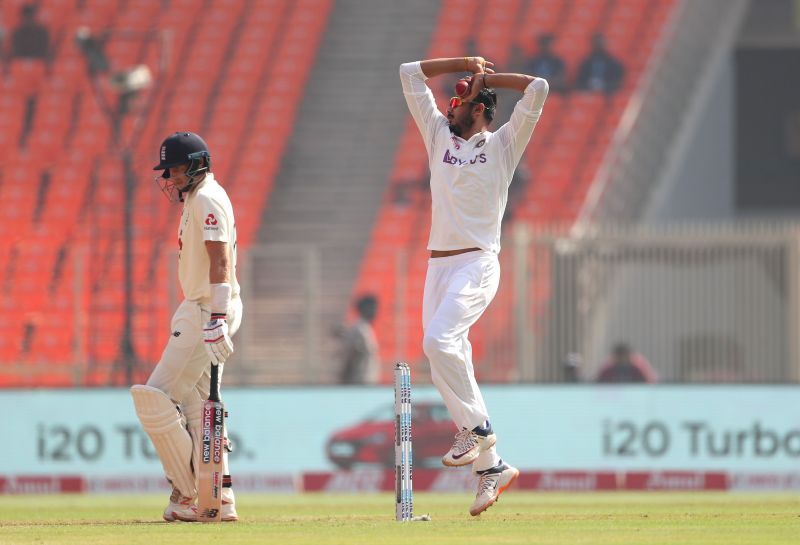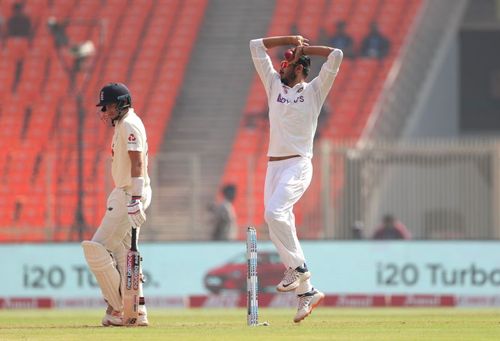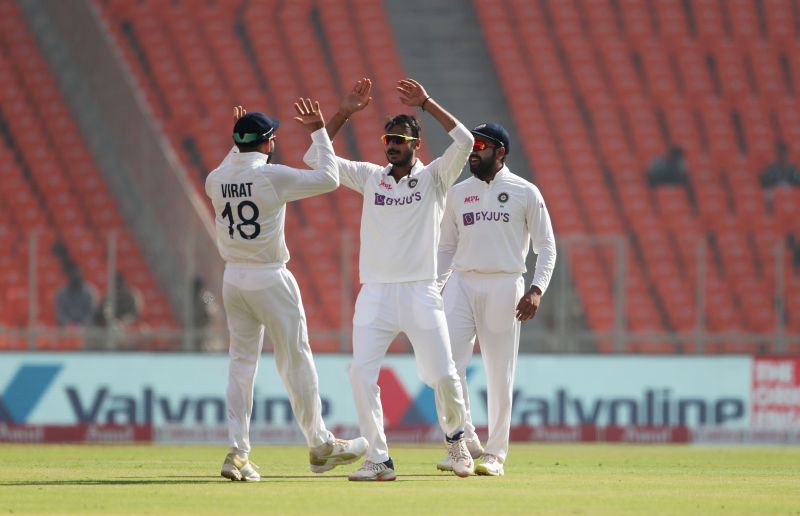
England's lions left wounded by left-arm spin

With the recently-concluded Test series between India and England, a lot has been made of India's turning pitches. The drama really picked up after the pink-ball Test, which was described as “bizarre” by Indian captain Virat Kohli.
The skipper insisted that the match ending in just a couple of days was a result of poor application of batting by both teams, rather than a “demonic” pitch or the harder pink ball.
Let’s take a step back and reflect back on what happened in January. India were battling it out in a series for the ages Down Under. Meanwhile, England were underway in their Asian tour, facing the Sri Lankans and preparing for the stern test that was to come their way, against India.
England skipper Joe Root was in scintillating form and setting the benchmark for players like Dom Sibley, Zak Crawley and Dan Lawrence. The England captain, leading from the front, aggregated a staggering 426 runs in the two-match series at Galle.
Roo was particularly successful with his back and across technique and some extravagant use of the sweep and reverse sweep (something Kevin Pietersen himself would be proud of) against the spinners.
Johnny Bairstow showed all his experience in subcontinent conditions as well, as he supported his captain through a few edgy situations. The standout Sri Lankan bowler throughout that series, though, was Lasith Embuldeniya. The left arm-spinner bagged 15 wickets in two Test matches, somewhat exposing England’s fragility against left-arm spin.
One had to witness the England batsmen's struggle as Root continued to put up a masterclass at the other end. One did wonder how the Englishmen would negate, with all due respect, a tougher matchup against the likes of Ravichandran Ashwin, in less than a month’s time.
England's series against India

In Jadeja's absence (due to injury), India opted to go with Shahbaz Nadeem, the vastly experienced left-arm spinner in the Indian domestic circuit, after original replacement Axar Patel also picked up an injury. That plan, though, somewhat backfired as it unsettled the balance of the side, but in Axar, India had the most analogous replacement for Jadeja.
The southpaw all-rounder had one of the most seamless transitions into Test cricket, eventually ending the series with 27 wickets to his name, averaging 10.59, in just 3 Test matches. He bagged 4 fifers in 6 innings, bringing to light England’s ability, or the lack thereof, to play left-arm spin.
England's tribulations began as soon as they were convinced that sweeping the spinners was the right way to play them, rather than the conventional way of using the feet to unsettle the bowlers.
With the pitches being a tad bit slower at Galle than in Ahmedabad, the batsmen had more time to go back and across or to employ the sweep shot to bail them out in Sri Lanka. But as soon as a taller spinner, Axar, began generating extra bounce as well as sharp turn in Ahmedabad, England's bail out shot seemed to unsettle themselves rather than the bowlers.
Axar Patel's hawk-like accurary and the occasional skidder that came in with the arm was enough to deceive the English batsmen, who immensly struggled to play through the line over the course of these two series.
There were times on this tour when it seemed like some of the English batsmen had never seen bowling like this. Of course, they hadn't, really.
Zak Crawley has never faced a spinner with the new ball in the county game. While Dom Sibley has done so just three times, it will never have been on a surface like Galle or Ahmedabad, where some balls turn and bounce and others skid on.
The end result - 42 wickets lost to left-arm spin over the course of 6 Test matches. With the openers, Sibley and Crawley, reaching double figure scores in double-figure scores just 4 times in 12 innings and twice in eight innings respectively, England's inexperienced batting order was vastly exposed throughout the series.
Rory Burns was rotated quite a bit, and thus, it might be unfair to pinpoint at his relatively small sample size, but even he just made 55 runs in the two matches he played in India.
Apart from Joe Root, Daniel Lawrence was perhaps their most convincing player of spin as the series progressed, but the double-A duo of Ashwin and Axar proved to be a huge ask for him too.
While Bairstow looks a completely different player against spin in white ball cricket, he too had his struggles in the longest format of the game. Whether the chopping and changing strategy by England affected their player's performances, but the ECB is convinced that rotating in these difficult times is essential, especially with the players being affected by living in the bio bubble. Thankfully for them, they have the shorter formats to focus on for now.